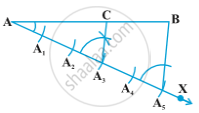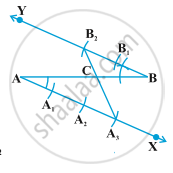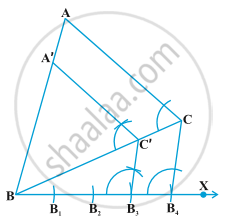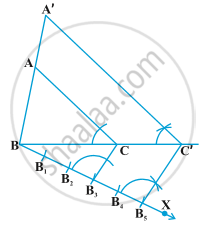Topics
Number Systems
Real Numbers
Algebra
Polynomials
Pair of Linear Equations in Two Variables
- Introduction to linear equations in two variables
- Graphical Method
- Substitution Method
- Elimination Method
- Cross - Multiplication Method
- Equations Reducible to a Pair of Linear Equations in Two Variables
- Consistency of Pair of Linear Equations
- Inconsistency of Pair of Linear Equations
- Algebraic Conditions for Number of Solutions
- Simple Situational Problems
- Pair of Linear Equations in Two Variables
- Relation Between Co-efficient
Quadratic Equations
- Quadratic Equations
- Solutions of Quadratic Equations by Factorization
- Solutions of Quadratic Equations by Completing the Square
- Nature of Roots of a Quadratic Equation
- Relationship Between Discriminant and Nature of Roots
- Situational Problems Based on Quadratic Equations Related to Day to Day Activities to Be Incorporated
- Application of Quadratic Equation
Arithmetic Progressions
Coordinate Geometry
Lines (In Two-dimensions)
Constructions
- Division of a Line Segment
- Construction of Tangents to a Circle
- Constructions Examples and Solutions
Geometry
Triangles
- Similar Figures
- Similarity of Triangles
- Basic Proportionality Theorem (Thales Theorem)
- Criteria for Similarity of Triangles
- Areas of Similar Triangles
- Right-angled Triangles and Pythagoras Property
- Similarity of Triangles
- Application of Pythagoras Theorem in Acute Angle and Obtuse Angle
- Triangles Examples and Solutions
- Concept of Angle Bisector
- Similarity of Triangles
- Ratio of Sides of Triangle
Circles
Trigonometry
Introduction to Trigonometry
- Trigonometry
- Trigonometry
- Trigonometric Ratios
- Trigonometric Ratios and Its Reciprocal
- Trigonometric Ratios of Some Special Angles
- Trigonometric Ratios of Complementary Angles
- Trigonometric Identities
- Proof of Existence
- Relationships Between the Ratios
Trigonometric Identities
Some Applications of Trigonometry
Mensuration
Areas Related to Circles
- Perimeter and Area of a Circle - A Review
- Areas of Sector and Segment of a Circle
- Areas of Combinations of Plane Figures
- Circumference of a Circle
- Area of Circle
Surface Areas and Volumes
- Surface Area of a Combination of Solids
- Volume of a Combination of Solids
- Conversion of Solid from One Shape to Another
- Frustum of a Cone
- Concept of Surface Area, Volume, and Capacity
- Surface Area and Volume of Different Combination of Solid Figures
- Surface Area and Volume of Three Dimensional Figures
Statistics and Probability
Statistics
Probability
Internal Assessment
- Division of Line Segment in a Given Ratio
- Construction of a Triangle Similar to a Given Triangle
- To divide a line segment in a given ratio
- To construct a triangle similar to a given triangle as per given scale factor
Notes
Construction 1 : To divide a line segment in a given ratio.
Given a line segment AB, we want to divide it in the ratio m : n, where both m and n are positive integers. To help you to understand it, we shall take m = 3 and n = 2.
Steps of Construction :

1)Draw a line AB.
2)Draw AX making an acute angle with AB.
3)Locate 5 (m + n) points `"A"_1, "A"_2, "A"_3,"A"_4 and "A"_5` on AX with the help of compass, so that `"A A"_1``= "A"_1"A"_2 = "A"_2"A"_3 = "A"_3"A"_4 = "A"_4"A"_5.`
4) Join `"BA"_5.`
5)Through the point `"A"_3` (m = 3), draw a line parallel to `"A"_5"B"` intersecting AB at the point C. Since `"A"_3"C"` is parallel to `"A"_5"B"`, therefore,
`"AA"_3/("A"_3"A"_5)= "AC"/"CB"` (by basic proportionality theorem)
`"AA"_3/("A"_3"A"_5)= 3/2` (by construction)
therefore, `"AC"/"CB"= 3/2`
This shows that C divides AB in the ratio 3 : 2.
Alternative Method
Steps of Construction :

1. Draw any ray AX making an acute angle with AB.
2. Draw a ray BY || AX by making ∠ ABY equal to ∠ BAX.
3. Locate the points `"A"_1, "A"_2, "A"_3` (m = 3) on AX and `"B"_1, "B"_2` (n = 2) on BY such that `"AA"_1` = `"A"_1"A"_2` = `"A"_2"A"_3` = `"BB"_1` = `"B"_1"B"_2`
4. Join `"A"_3"B"_2`. Let it intersect AB at a point C
Then AC : CB = 3 : 2.
Construction 2- To construct a triangle similar to a given triangle as per given scale factor.
Example 1 : Construct a triangle similar to a given triangle ABC with its sides equal
to `3/4` of the corresponding sides of the triangle ABC.
Solution: Given a triangle ABC, we are required to construct another triangle whose
sides are `3/4` of the corresponding sides of the triangle ABC.
Steps of Construction :

1) Draw ΔABC.
2) Draw ray BX making an acute angle with AB
3) Locate 4 equal points `"B"_1` to `"B"_4` on BX
4) Join `"B"_4"C"`
5) Draw a line through `"B"_3` || `"B"_4"C"` to intersect BC at C′
6) Draw line through C′ || AC to intersect AB at A′
Then, ∆ A′BC′ is the required triangle.
Let us now see how this construction gives the required triangle.
`"BC′"/"C′C"` `= 3/1` (By construction)
Therefore, `"BC"/"BC′"` `= ("BC′" + "C′ C")/"B C′"` `= 1+ "C′ C"/"B C′" `
`= 1+ 1/3= 4/3`
i.e `"B C′"/"BC"= 3/4`
Also C′A′ is parallel to CA. Therefore, ∆ A′BC′ ~ ∆ ABC. (Angle-Angle rule)
So, `"A′B"/"AB"= "A′C′"/"AC"= "BC′"/"BC"= 3/4`
Example 2 : Construct a triangle similar to a given triangle ABC with its sides equal
to `5/3` of the corresponding sides of the triangle ABC .
Solution : Given a triangle ABC, we are required to construct a triangle whose sides
are `5/3` of the corresponding sides of ∆ ABC.
Steps of Construction :

1) Draw ΔABC.
2) Draw ray BX making an acute angle with BC.
3) Locate 5 equal points `"B"_1` to `"B"_5` on BX
4) Join `"B"_3"C"`
5) Draw line through `"B"_5` parallel to `"B"_3"C"` to intersect BC at C′
6) Draw line through C′ parallel AC to intersect AB at A′
Then A′BC′ is the required triangle.
For justification of the construction, note that ∆ ABC ~ ∆ A′BC′ (Angle-Angle rule)
Therefore, `"AB"/"A′B"= "AC"/"A′C′"= "BC"/"BC′"`
But, `"BC"/"BC′"``= "BB"_3/"BB"_5= 3/5`,
so, `"BC′"/"BC"= 5/3`, and, therefore,
`"A′B"/"AB"= "A′C′"/"AC"= "BC′"/"BC"= 5/3`
